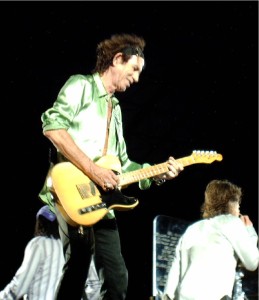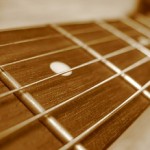Language
Introduction To Alternate Guitar Tunings
There's much more to the guitar than playing in standard tuning! While the classic EADGBE structure clearly remains the de facto setup, experimenting with alternate tunings is an excellent way to expand your musical horizons and inspire creativity. Playing in alternate guitar tunings will also help you better understand the relationship between notes and chords as you will have to relearn shapes that correspond with the tuning. While there are many to explore, below are three of the most popular alternate guitar tunings that are great for beginners.
 Keith Richards is well known for his use of the Open G tuning.[/caption]
With Open G, you pretty much tune a guitar to be able to produce a full G chord while all the strings are “open,” meaning without touching a single fret. There are numerous ways to tune to Open G, but most players tend to use DGDGBD. Open tunings such as this one are the hallmark of slide guitar, responsible for the signature twang of several country songs.
And while most guitars tuned in Open G are typically used as accompanying instruments, some players use them as the lead. Keith Richards is a great example, using the tuning in some of the Rolling Stones’ most popular songs including "Honkey Tonk Woman," Tumblin Dice,” "Start Me Up" and "Brown Sugar," just to name a few. Instead of just sliding, Richards would manipulate chord structures to take advantage of the open-notes in the tuning and then add his signature syncopated riffs.
Keith Richards is well known for his use of the Open G tuning.[/caption]
With Open G, you pretty much tune a guitar to be able to produce a full G chord while all the strings are “open,” meaning without touching a single fret. There are numerous ways to tune to Open G, but most players tend to use DGDGBD. Open tunings such as this one are the hallmark of slide guitar, responsible for the signature twang of several country songs.
And while most guitars tuned in Open G are typically used as accompanying instruments, some players use them as the lead. Keith Richards is a great example, using the tuning in some of the Rolling Stones’ most popular songs including "Honkey Tonk Woman," Tumblin Dice,” "Start Me Up" and "Brown Sugar," just to name a few. Instead of just sliding, Richards would manipulate chord structures to take advantage of the open-notes in the tuning and then add his signature syncopated riffs.
Drop D (DADGBE)
Easily the most widely used alternate tuning, Drop D is also the easiest to work with as it only requires the low-E string to be down-tuned to D. Because of its very close similarity to standard tuning, Drop D is usually the first alternate guitar tuning introduced to new players. Drop D can be heard across nearly every popular style of modern music including rock, metal, blues, folk, country and more. One of the benefits of this alternate guitar tuning is that it allows players to create a full power chord with a single finger, making it very easy to shift back and forth between them with extreme quickness (a staple of metal and thrash). Along with quick and easy power chords, Drop D allows for playing several open-note positions while in the key of D, which creates a much fuller and complex sound. You can hear Drop D tuning in action on countless songs including "Everlong" by the Foo Fighters, "Dear Prudence" by The Beatles, "Your Body is a Wonderland" by John Mayer and Nirvana's " Something in the Way."Open G (DGDGBD)
[caption id="attachment_4848" align="alignright" width="233"] Keith Richards is well known for his use of the Open G tuning.[/caption]
With Open G, you pretty much tune a guitar to be able to produce a full G chord while all the strings are “open,” meaning without touching a single fret. There are numerous ways to tune to Open G, but most players tend to use DGDGBD. Open tunings such as this one are the hallmark of slide guitar, responsible for the signature twang of several country songs.
And while most guitars tuned in Open G are typically used as accompanying instruments, some players use them as the lead. Keith Richards is a great example, using the tuning in some of the Rolling Stones’ most popular songs including "Honkey Tonk Woman," Tumblin Dice,” "Start Me Up" and "Brown Sugar," just to name a few. Instead of just sliding, Richards would manipulate chord structures to take advantage of the open-notes in the tuning and then add his signature syncopated riffs.
Keith Richards is well known for his use of the Open G tuning.[/caption]
With Open G, you pretty much tune a guitar to be able to produce a full G chord while all the strings are “open,” meaning without touching a single fret. There are numerous ways to tune to Open G, but most players tend to use DGDGBD. Open tunings such as this one are the hallmark of slide guitar, responsible for the signature twang of several country songs.
And while most guitars tuned in Open G are typically used as accompanying instruments, some players use them as the lead. Keith Richards is a great example, using the tuning in some of the Rolling Stones’ most popular songs including "Honkey Tonk Woman," Tumblin Dice,” "Start Me Up" and "Brown Sugar," just to name a few. Instead of just sliding, Richards would manipulate chord structures to take advantage of the open-notes in the tuning and then add his signature syncopated riffs.

